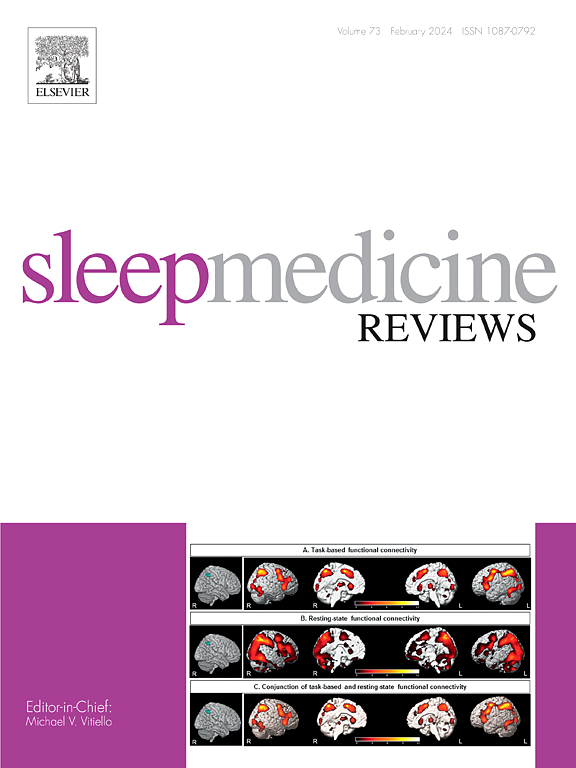The impact of pharmacotherapy for premenstrual dysphoric disorder on sleep
IF 9.7
1区 医学
Q1 CLINICAL NEUROLOGY
引用次数: 0
Abstract
Premenstrual dysphoric disorder (PMDD) affects a subset of women of reproductive age, characterized by severe mood disturbances and physical symptoms during the luteal phase of the menstrual cycle. Symptoms include mood swings, irritability, anxiety, fatigue, physical discomfort, and disruptions to sleep and circadian rhythms, such as altered melatonin secretion. Despite the prevalence of these symptoms, the impact of PMDD treatments on sleep and circadian markers, like melatonin, remains insufficiently understood. This review examines how dysregulated serotonin signaling, disrupted allopregnanolone activity (a neurosteroid derived from progesterone), and aberrant circadian rhythms contribute to PMDD. It also explores the effects of pharmacological treatments, including selective serotonin reuptake inhibitors, on sleep and melatonin regulation, and how these factors influence treatment outcomes. Additionally, the use of hypnotics and sedatives to manage sleep disturbances in PMDD is considered, weighing their potential benefits and risks. A deeper understanding of the interaction between PMDD symptoms, sleep, and circadian rhythms is crucial for developing more effective treatments. Further research is needed to explore the relationship between symptom management, sleep patterns, and circadian function in PMDD, and to determine how these factors can be optimized to improve clinical outcomes and quality of life for women affected by the disorder.
经前焦虑症的药物治疗对睡眠的影响
经前烦躁不安症(PMDD)影响了一部分育龄妇女,其特点是在月经周期的黄体期出现严重的情绪障碍和身体症状。症状包括情绪波动、易怒、焦虑、疲劳、身体不适、睡眠和昼夜节律中断,如褪黑激素分泌改变。尽管这些症状普遍存在,经前不悦症治疗对睡眠和昼夜节律指标(如褪黑素)的影响仍未得到充分了解。这篇综述探讨了血清素信号失调、异孕酮活性(一种源自孕酮的神经类固醇)被破坏以及异常的昼夜节律是如何导致经前抑郁症的。它还探讨了包括选择性血清素再摄取抑制剂在内的药物治疗对睡眠和褪黑激素调节的影响,以及这些因素如何影响治疗结果。此外,考虑使用催眠药和镇静剂来管理经前抑郁症的睡眠障碍,权衡其潜在的益处和风险。深入了解经前不悦症症状、睡眠和昼夜节律之间的相互作用对于开发更有效的治疗方法至关重要。需要进一步的研究来探索经前不悦症的症状管理、睡眠模式和昼夜节律功能之间的关系,并确定如何优化这些因素以改善受该疾病影响的女性的临床结果和生活质量。
本文章由计算机程序翻译,如有差异,请以英文原文为准。
求助全文
约1分钟内获得全文
求助全文
来源期刊

Sleep Medicine Reviews
医学-临床神经学
CiteScore
20.10
自引率
3.80%
发文量
107
期刊介绍:
Sleep Medicine Reviews offers global coverage of sleep disorders, exploring their origins, diagnosis, treatment, and implications for related conditions at both individual and public health levels.
Articles comprehensively review clinical information from peer-reviewed journals across various disciplines in sleep medicine, encompassing pulmonology, psychiatry, psychology, physiology, otolaryngology, pediatrics, geriatrics, cardiology, dentistry, nursing, neurology, and general medicine.
The journal features narrative reviews, systematic reviews, and editorials addressing areas of controversy, debate, and future research within the field.
 求助内容:
求助内容: 应助结果提醒方式:
应助结果提醒方式:


